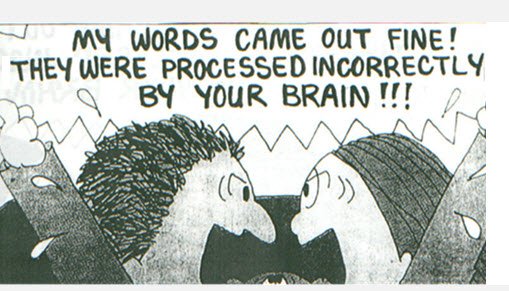
(Photo: Dean C.K. Cox, http://www.eurasianet.org/node/64170)
During certain periods of time, the increase of tensions regarding language situation in Kazakhstan is observed. It is connected with the unsuccessful attempt to switch solely to the Kazakh language in the political, economic, and social lives of the citizens of Kazakhstan after a long period of the Russian language dominance in the Soviet time. The discourse analysis is a useful approach to trace the development of ideas and attitudes among the population of Kazakhstan. In this blog, I will analyze the period of 2007 – 2015, almost a decade when one of the largest conflicts about the linguistic issues appeared.
The following two paragraphs are from the interviews with an educational leader and social activist who express different views on the role of Kazakh and Russian in the society as the starting point of the coming tensions.
“Kazakh-language teaching is gradually being introduced into all Russian-language schools, but there are no plans to close Russian-language schools. In the Soviet Union, there was discrimination against Kazakh. Now there is a revival of Kazakh, but Russian is functioning alongside it. There is no discrimination” (Eurasianet July 23, 2007; a quote from Svetlana Chzhao, the official in charge of Karaganda city’s general and secondary education)
“Policy seems to be specially constructed around removing Russian-speakers from state structures. I think for the authorities it is advantageous if [Russian speakers] do not know [Kazakh].” (Eurasianet July 23, 2007; a quote from Ksenia Makhotina, a local activist for the unregistered Alga! Party)
The expert Chzhao emphasized on the “gradual” introduction of the Kazakh language into schools with Russian medium of instruction. This type of introduction was not quite clear explained because in the year 2007 the Kazakh language had already been introduced as a subject in all schools throughout the country. In the case of the Kazakh language, the process of language revitalization (Fishman, 1991) was taking place due to its underdevelopment during the Soviet Period. She considered that this positive trend does not go at the expense of the Russian language. However, according to Makhotina, not the “gradual” development of the Kazakh language but the gradual replacement of Russian speaking people from authority positions is taking place in Kazakhstan. Thus, the concern of spreading language discrimination was expressed by some public figures in 2007.
These concerns were probably justified because several years later the slight tension turned into an attempt to raise a social conflict where some parties demanded the total exclusion of the Russian language from the use in Kazakhstan.
“Serious passions flared up this week in Kazakhstan. The war for the Russian language. It has begun with a letter, addressed to the President, which was signed by over a hundred people. Among those who signed are poets, deputies, and even astronauts. The main requirement is to protect the Kazakh language, and for this purpose to exclude Pushkin’s language from public life. Otherwise, the defenders of the state language ‘are willing to go to extreme measures’, as is stated in their letter” (Mir24 September 11, 2011: a quote from the reporter of the news program)
The use of words is particularly interesting. “Among those who signed are poets, deputies, and even cosmonauts” which means that even people who are not directly connected to language policy or linguistic issues contribute to the debate. Reporters do not illustrate what “extreme measures” activists claim and it means that those who announce it probably do not have anything to threat with but express the seriousness of their intentions. Also, the use of “Pushkin’s language” instead of the Russian language is an extra contrast between the languages of Russians and Kazakhs, Pushkin and Abai and consequently between Russia and Kazakhstan. This emphasizes that the Russian language is appropriate for Russia and in Kazakhstan Abai’s language should be spoken. The assimilationist discourse is mainly negative here because is likely to involve forced shift to the Kazakh language polarizing Russian and Kazakh to each other.
The conflict was resolved without any extreme measures and in 2015 the expert of Central Eurasian studies, professor of Indiana University William Fierman, comments on the linguistic situation in Kazakhstan.
After a short period of unrealistic expectations [after the Independence] of the Kazakh language policy has been and remains moderate. […] In my opinion, citizens should have the right to speak in Kazakh, Russian or any other language they choose. However, the policy was not sufficiently tight to ensure that all citizens who have gone through the Kazakhstani education know the state language.
Under “unrealistic expectations” Fierman implies the period after the gaining the Independence when radically minded public figures intended to exclude the Russian language from the use of the population of Kazakhstan in several years. These ambitious plans failed because the President of the Republic strengthened the status of the Russian language in the Constitution as a language of interethnic communication. This change was made in order to keep harmony and peace between two main ethnic groups: Russians and Kazakhs. Afterward, the language policy was very deliberate and according to some experts too cautious. The main problem in current language policy is its incapacity to turn the Russian-speaking population into learning the Kazakh language and use it on the everyday basis.
As a conclusion, we see that despite the moderate language policy regarding official languages in Kazakhstan, the intention to make the Kazakh language the only language used in all spheres of social and political life still gets public support. The year 2011 was a critical point when dissatisfaction with too lenient measures regarding the Kazakh language development caused a new wave of the controversy of the language’s usage in Kazakhstan. After this significant debate followed the period of relative calm in this question which, however, can be calm before the storm if some political figures decide to provoke a conflict on the basis of language. That is why policymakers and multilingual leaders should be precise and careful in elaborating language policies in order to sustain mutual understanding in the society as this is a very sensitive topic and can be easily used for some interested parties’ purposes.
References
De Jong, E. J. (2011). Foundations for multilingualism in education: From principles to practice. Philadelphia, PA: Caslon Publishing.
Experty: voina protiv russkogo yazika raskolet Kazakhstan [Experts: the war against the Russian language will split Kazakhstan]. (2011, September 9). Retrieved from http://mir24.tv/news/society/4251838
Fishman, J. A. (1991). Reversing language Shift: Theory and Practice of Assistance to Threatened Languages. Clevedon : Multilingual Matters.
Lillis, J. (2007, July 23). Kazakhstan: Officials Adopt Low-Key Approach on Language Policy. Retrieved from http://www.eurasianet.org/departments/insight/articles/eav072407.shtml
Uilyam Fierman: yazikovaya politika v Kazakhstane umerennaya [William Fierman: the language policy in Kazakhstan in moderate]. (2015, June 26). Retrieved from https://liter.kz/ru/interview/show/10167-uilyam_fierman_yazykovaya_politika_v_kazahstane_umerennaya_





